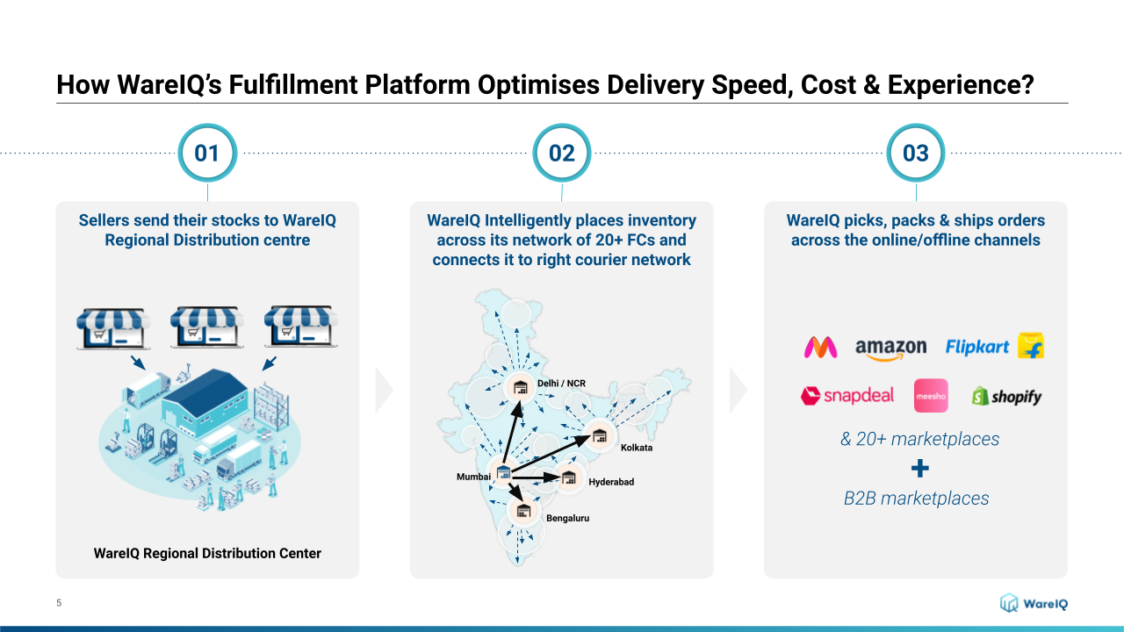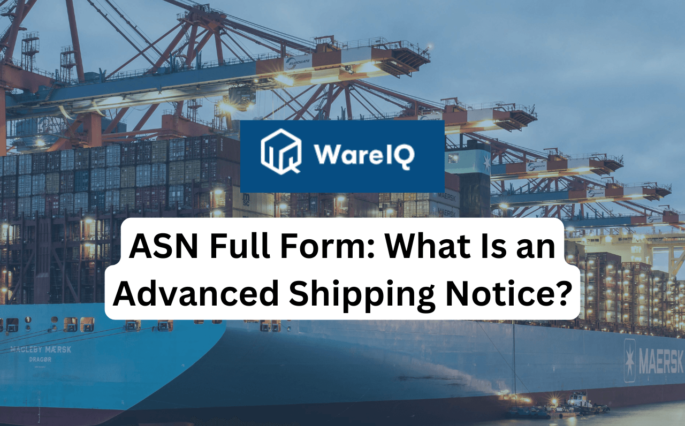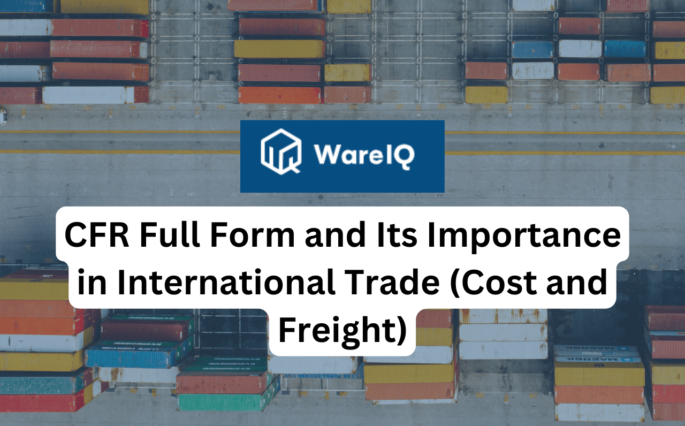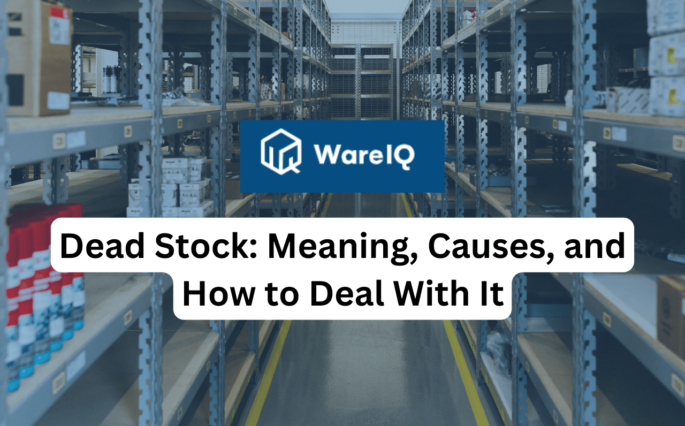What are eCommerce Logistics Costs? 10 Types of Main Logistics Costs in 2025

E-Commerce Logistics is the operations involved in storing and shipping inventory for an online marketplace, including inventory management and the collecting, packing, and shipping of online orders.
With countless bundles shipped across different countries on any given day, systems must be in place to keep them on track and ensure that they are safely delivered to the right place, within the estimated time. Efficient management of eCommerce logistics comes along with the costs associated with it. Read along to understand various types of logistics costs & various ways in which eCommerce logistics companies can reduce costs for eCommerce & online D2C businesses.
- What is eCommerce Logistics?
- What is the Importance of Understanding Logistics Cost?
- What are the 10 Main Types of eCommerce Logistics Costs in 2025?
- How to Manage and Reduce eCommerce Logistics Costs in 2025?
- How can Outsourcing Logistics Requirements to a 3PL eCommerce Logistics & Fulfillment Company Reduce Logistics Costs?
- Conclusion: Why Do You Need to Keep Track of Logistics Costs in 2025?
- Logistics Cost FAQs (Frequently Asked Questions)
What is eCommerce Logistics?
eCommerce logistics begins with moving inventory from the place of the manufacturer and keeps going until it reaches the customer’s accurate location. eCommerce fulfillment is one of the riskiest methods of eCommerce logistics, and various components involved in eCommerce logistics are listed below:
- Inventory management
- Warehousing and storage
- Order fulfillment
All components are very complex compared to one another so handling these processes smoothly is no easy task.
Businesses should guarantee their stock levels as sufficient in a distribution center, close to that customer’s location. If they outsource fulfillment, their 3PL must be good and satisfy the fulfillment of orders in a fast manner, even during holidays or any peak season periods.
If any mistakes take place in conveying the confirmation to the customer or implementing the process within your retail supply chain, it reflects negatively on the business.
WareIQ, an eCommerce fulfillment company, empowers online brands with a superior-tech platform to compete with Amazon like service levels by bringing their average delivery timelines from 5-10 days to 1-2 days.
What is the Importance of Understanding Logistics Cost?
Logistics cost is the expenses that are incurred through the logistical aspect of a company. That refers to things such as the number of packages, transportation, and storage facilities. However, planning and decision-making frequently result in excessive costs.
Therefore, examining industry operations and making processes more efficient are significant policies to reduce a company’s costs. Paying attention to the control of logistics costs helps the business keep these costs as low as possible.
What are the 10 Main Types of eCommerce Logistics Costs in 2025?
The logistics area encompasses all the processes that occur within the supply chain. During these processes, the flow of materials involves many storages and movement techniques, planning, resources, strategies, and workers in an organization.
However, the logistical cost may vary from one company to another, as there are many variables involved. There are also fixed costs in every company. Some logistics costs are listed below:
Storage and inventory
Logistics and inventory costs depend on the number of goods that the company works with and the duration of storage of inventory in the warehouse. Thus, we can conclude that the longer goods spend in the fulfillment warehouse, the larger the logistics expenses are. (Read how you can reduce inventory-carrying costs.)
It is also essential to note that inventory expenses are separated into product cost, product shortage cost, and maintenance cost. Product cost is related to the investments that are made in every commodity that is picked up by the suppliers. Product shortage cost has to do with the absence of items and the influence that this can cause.
Maintenance costs are connected to taxes, labour, physical space rental, inventory, etc. This contributes to the effective working of the entire organisation.
Packaging
A principal factor for receiving a good review from customers who purchase your goods is the packaging process and it should be done adequately. Thus, it is viable to insert some safety precautions to avoid damage and destruction of goods and hence expect good customer feedback.
With this issue, it’s additionally possible to avoid wasting and optimize the use of space. This is a result of correct packaging and is crucial to generating savings in prices and storage space.
Transportation and freight
Transportation costs in eCommerce logistics costs is one of the main expenditures of companies that specialize in distribution facilities. This is often a result of this sector involving the acquisition of vehicles, fuel, maintenance, depreciation, and idleness, among others.
With challenges such as theft of goods, accidents, and the long distances that goods have to travel, the risk of working in this field increases. As a result, it is critical to invest in this sector.
Technology
Nowadays, competitiveness is increasing in the eCommerce space. Most companies are facing some challenges in delivering goods at a fast pace. People also expect their order within one or two days. The good news is that technology is able to automate many of the processes involved in eCommerce.
The use of digital platforms, for example, is important for the logistics sector to work with high turnout. Another important factor is that it helps to reduce errors and inconsistencies. Finally, it gives agility and effectively reduces logistics costs.
Financial designing
As mentioned previously, knowing about logistics valuation is a necessary step in knowing what steps to require. With well-established expenses, successive steps are required to form an action plan within every logistics sector and improve the techniques.
Structuring processes
If there is no structure in the logistics process, every employee will do their work in their own way. But this will cause failures and a waste of time. So with this in mind, process mapping will be the best solution.
Understanding the flow of business activities permits managers to strategize and confirm the order of the process to be followed. This has to be reviewed regularly. It is possible to create a higher level of monitoring of each sector and its productivity.
Task automation
The work involved in processing the task manually frequently drives the cost up since it takes more time and errors take place at higher rates. So automating important processes will benefit the company. Programmed machines and software are gaining importance because work is done in as short a time as possible and more efficiently.
Fuel Surcharges
Fuel Surcharges are the fees that add to the logistics cost due to the operation of vehicles. These fees are added by the trucking companies and consumers end up paying the fluctuating fuel costs. Fuel surcharges are calculated based on your freight volumes so facing unexpected heavy fuel surcharges is a common occurrence.
Handling Fees
Handling fees are also a fee that takes place in eCommerce logistics. This sudden charge is given to the customer at different rates based on the retailer’s logistics partner. These fees include the costs of preparing and moving the products at the time of transportation. This does not include the shipping rate.
Restocking Fees
A customer may not be satisfied with their ordered products. They decide to return an item to the warehouse. Then the item can be restocked in the inventory for resale purposes. Any eCommerce business that depends on a logistics partner for inventory and storage needs to bear the prices of this activity. Some e-commerce businesses combat this by giving customers a partial refund for returning things while withholding a standard amount to hide the restocking fee.
Suggested Article: Managing eCommerce Returns
How to Manage and Reduce eCommerce Logistics Costs in 2025?
Logistics plays a very important role in company management. Through management and execution planning, you can optimize processes, cut back on its prices and increase your profit.
Given below are a few tips on how you can reduce eCommerce logistics costs.
Use Different Methods of Transportation
You can reduce the cost by being more adaptable to the modes of transportation your business uses. Shipping goods by air is usually costlier compared to shipping goods by road.
However, the time it takes to ship by road may cost you sales. So stay informed on the price of the amount of all modes of transportation and you can change your preferences if you need to.
There is also intermodal transportation if you are dependent on single modes. So rail transport is very low in cost compared to the cost of transportation on by trucks.
Embrace Automation in Your Logistics Process
Another process to reduce the eCommerce logistics cost is by including automation in your logistics process. If your business can track shipments from start to end, they can know if there are any problems faced in transportation logistics. This will show you live information on unexpected delays as well as allow processes to get faster and more cost-effective.
Improve Supply Chain Visibility
Checking and maintaining the control and clarity of your supply chain may nullify any sudden increase in logistics costs. Tracing and maintaining control over your components and products can quickly decrease shipment delays or service disruptions. Other routes of supply can be implemented faster, and this helps us to control the cost. You can find disruptions in your company’s logistics process if you use real-time dashboards and it can give you good insights into mitigating possible issues later.
One of the best ways to reduce eCommerce logistics costs is by working as a group with one of your suppliers to reduce the costs. In other cases, logistics suppliers will cover direct logistics costs.
Look for Opportunities to Consolidate Shipments and Space
If you are waiting for a chance to consolidate your shipments, you may need to know about less-than-truckload (LTL) shipments. This is a good option for shipments of lower weight. If you can consolidate shipments for a variety of customers or products into a single shipment, you have a chance to save money by using full-truckload shipping.
You have to identify any wasted space and try to mitigate it. Your business can improve storage density by increasing the vertical space with bins. This can minimize the faults that shipping containers sustain by decreasing movement at the time of transportation.
Outsource to a 3PL Provider
By outsourcing to a third-party logistics (3PL) provider, you can remove the need for investing in transportation, technology, space, and staff members to initiate the logistics process. Many companies offer logistic solutions for optimizing the logistic process and decreasing costs.
A company such as WareIQ can work with you one-on-one from beginning to end, providing your business with custom, targeted delivery solutions. From on-demand and same-day with routed delivery choices, our team can work with you to resolve problems and realize the solutions that exceed your expectations. With our transparent pricing, you will know how much your logistics, warehousing, or delivery services will cost.
How can Outsourcing Logistics Requirements to a 3PL eCommerce Logistics & Fulfillment Company Reduce Logistics Costs?
3PLs are simply logistical fulfillment companies that are involved in the process of inventory storage, packaging, and shipping. Of course, 3PLs charge varying prices for each service, but it’s usually overall less expensive to leverage their scale and resources rather than attempt to do it yourself.
Affordable warehousing costs
Warehouses are getting costlier, and are also demanded more. If you partner with a 3PL, you can save your inventory in components of their fulfillment centers together with other eCommerce businesses. In this way, the warehousing costs are shared across the various businesses.
Bulk carrier discounts
With thousands of shoppers, 3PLs can arrange bulk discounts from shipping carriers like UPS, USPS, FedEx, and DHL to supply higher rates for expedited shipping, 2-day shipping, international shipping, and more. Of course, the more packages you ship, the higher rates you can get to further decrease logistics costs.
Technology and forecasting
Most 3PLs have best-in-class technology and tools. These tools include inventory forecasting, so you know when to replenish the products that are in demand.
Expect to continually search for ways in which to cut back logistics costs while still operating your business in a good manner. One of the best ways to keep eCommerce logistics costs in check is to manage orders and deliveries effectively. Avoid outrageous delivery prices by keeping an in-depth eye on supply and demand (a method known as forecasting) to confirm that your order arrives before it’s urgently required and to avoid overwhelming the warehouse with too many deliveries right away.
Conclusion: Why Do You Need to Keep Track of Logistics Costs in 2025?
Businesses should continually search for ways in which to cut back logistics costs while still performing operations in the best possible way. One of the best ways to keep logistics costs in check is to manage orders and deliveries effectively. Avoiding outrageous delivery prices can also be done by keeping an in-depth eye on supply and demand (a method known as forecasting) to confirm your order arrives before it’s urgently required and to avoid overwhelming the warehouse with too many deliveries right away. One way to do this is to partner with a technologically advanced company like WareIQ, which supplies businesses with tools to forecast and plan their distribution and fulfillment strategy in the most efficient ways possible.
WareIQ is a Y-combinator backed startup, that is the leading provider of full-stack eCommerce fulfillment services for 300+ reputed brands in India. WareIQ offers a full-stack platform for eCommerce companies to enable same-day delivery and next-day delivery to customers – an Amazon Prime-like experience but accessible to everyone.
WareIQ has customised offerings for merchants experiencing different order volumes as well as having different delivery speed expectations. WareIQ is probably one of the very few fulfillment tech companies in the world that have same-day delivery service for their customers under their product “WareIQ RUSH”.

With world-class WMS functionalities, WareIQ handles the entire range of intricate operations in the eCommerce fulfillment process, ranging from Inbound Operations such as scanning and quality check, through 100% accurate Pick and Pack, to Inventory Management across all channels. WareIQ’s next day delivery and same-day delivery services are helping eCommerce businesses set new standards with respect to setting customer expectations and fulfilling them with high efficacy. At the same time, WareIQ customers realise significant cost savings and wider reach due to better negotiations with shipping partners, strategically placed warehouses, economies of scale and scope in warehousing, and data-driven decision-making.
WareIQ’s WMS, a centralised tech platform helps to better manage undelivered orders by reducing NDR processing time by 12 hours – a multifunctional NDR dashboard helps to track and take immediate action for undelivered orders in real-time, thereby reducing RTO by up to 10%. Automatic replenishment recommendations and easy purchase order creation capabilities on the WareIQ platform further empower eCommerce companies to leverage all possible ways of increasing their ROI.
- Pan India Fulfillment & Darkstore Network: Plug-and-play fulfillment infrastructure with no minimums, which is compliant with Amazon Seller Flex, Flipkart Assured, Myntra and other marketplaces
- Inventory & Network Planning Excellence: Best-in-class AI models for sales forecasting, product segmentation, and inventory management to reduce inventory by 40% and increase revenue by 10%.
- Vertically Integrated Fulfillment Tech Stack: Our Fulfillment Tech Solution supports integrations with 20+ top marketplaces & D2C platforms, and prominent national, regional and hyperlocal couriers, enhancing reach by covering deliveries for 27,000+ pin codes
- Supply Chain Productivity Applications: Integrate a host of supply chain productivity apps with a single-click to your existing CRMs, ERPs & accounting software to manage your logistics workflows from one command center. Use Apps like RTO Shield to get 100% RTO protection, Branded Tracking to turn your order tracking page into a profitable marketing channel, and many more.
Trusted by 300+ top Indian brands, we are helping them accelerate online sales and expedite their growth through a synergistic combination of advanced technology, robust fulfillment infrastructure & seller enablement services!WareIQ is backed by leading global investors including Y Combinator, Funders Club, Flexport, Pioneer Fund, Soma Capital, and Emles Venture Partner.







